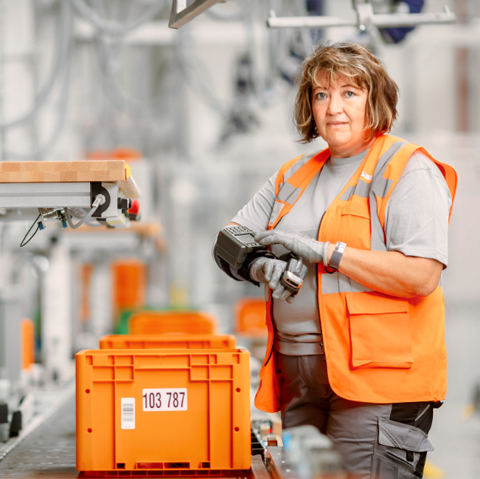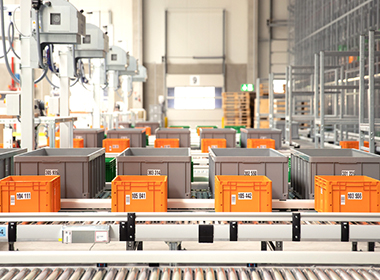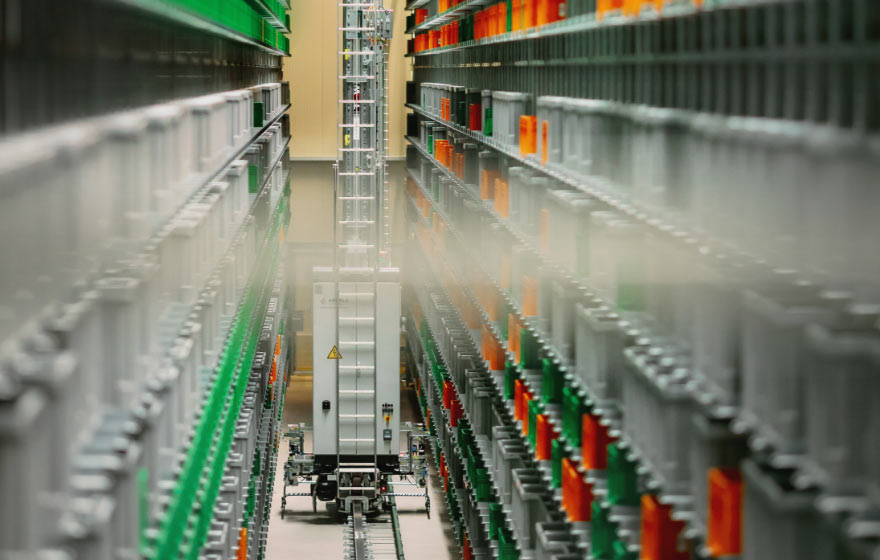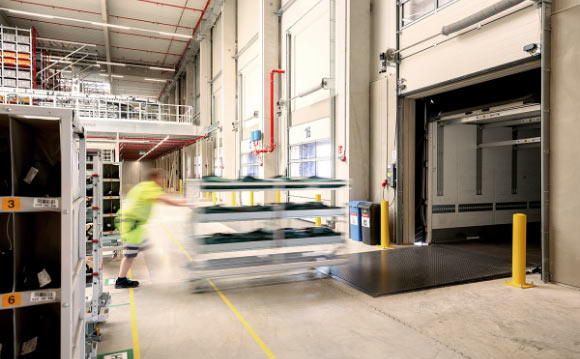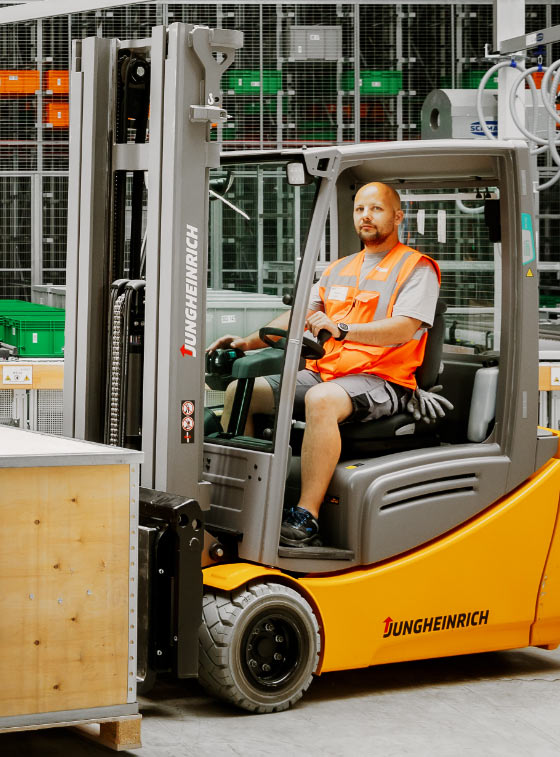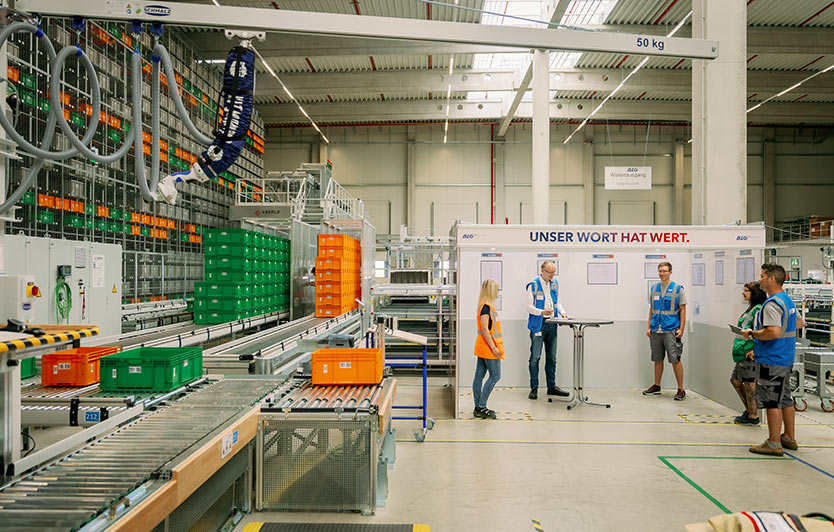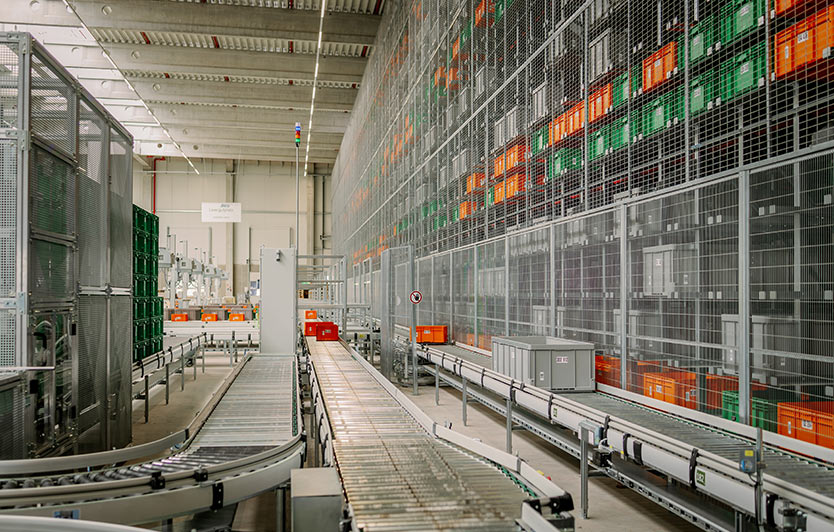Then the BLG team transfers the harnesses to different-sized, color-coded containers, scans them into the computer system and interlinks them in the IT system. This prepares the cable harnesses for their journey to the automated small parts warehouse, with its awesome size and technical capabilities. The warehouse contains eleven rack aisles with 18 levels; enough space for around 37,000 containers. Eight storage and retrieval machines travel up and down the aisles. Tirelessly, they feed or remove the small parts containers into or out of the racks, or reposition them. It’s a vast, automated puzzle that fills the warehouse with buzzing and humming. The work of the BLG employees who carefully take the cable harnesses into storage in the warehouse is crucial. It ensures the components are always ready in the right place and can be supplied fully automatically to Volkswagen – without any inconsistencies, delays or mix-ups. “We do the groundwork so that the right cable harness for the right car is available at the assembly line in Zwickau exactly when it’s needed,” explains Mathias Pfeiffer.
It’s no easy job, especially as the BLG facility will have to process more cable harnesses practically every day as the output of the Volkswagen factory in Zwickau grows continuously. “To make sure all work process are and remain stable and reliable at all times, we need excellent coordination between planning, IT, technical equipment and motivated employees.” So far, this has been achieved, says the 39-year-old. “And we do everything to keep it that way.”
Fast, efficient, accurate
Massive volumes of cable harness components need to be checked for completeness, quickly stored and automatically passed on at the right time. Every day, in three shifts and around the clock. “The requirements placed on the careful work and learning capability of employees, technical equipment and IT could hardly be higher,” says Mathias Pfeiffer. This is especially because the components are so crucial. Alongside the software and batteries, cable harnesses are among the most important parts of an electric car. They are like its nerve system. Usually, every car has seven different harnesses. Together they form the vehicle wiring system. LEONI is a globally successful specialist in this area and a partner of many automotive manufacturers. The on-board electrical system controls not only the drive system itself, but also the air conditioning, sound and navigation systems as well as driver assistance systems such as parking assistant and congestion assistant.
And it doesn’t stop there, because the ranges of features and performance levels of cars are increasing all the time. The more functions consumers want for their electric vehicles, the more capability the wiring system and cable harnesses need to provide. What’s more, the vast majority of new cars are individually configured to order, so the cable harness sets are correspondingly diverse. Complexity is growing in all areas – and logistics operations must rise to the challenge.
